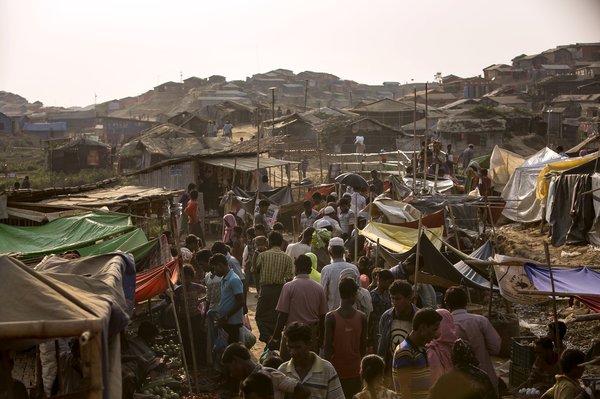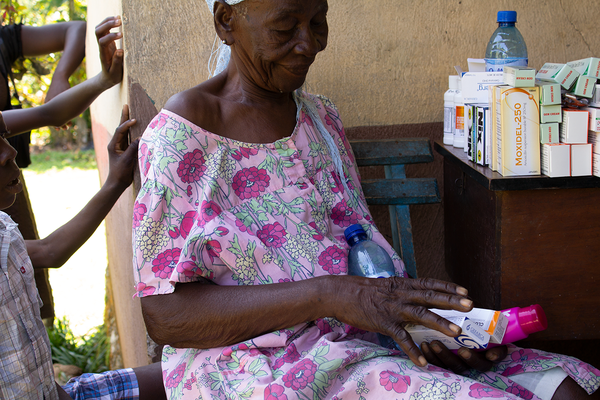
A partial view of Hosanna town in southern Ethiopia, a major place of origin for Ethiopian migrants in South Africa. Photo by June Adamson for Roots Ethiopia, All Rights Reserved.
According to official figures, more than 3 million Ethiopians live abroad, and South Africa is Ethiopia’s major destination country for South-South migration. At the national level, remittances make a crucial contribution to the macroeconomic balance, providing a much-needed source of foreign exchange. National Bank of Ethiopia data shows that the official remittances to Ethiopia reached US$4.5 billion in 2019. This accounts for some five percent of the country’s GDP, exceeding revenues earned from the export sector. According to the Ministry of Foreign Affair’s estimates, US$158 million could be sent annually from Ethiopian migrants in South Africa to places of origin, which does not capture the significant flows through informal channels.
Remittances and Ethiopia’s national, local and household economies
Notwithstanding the perilous journey to the Republic of South Africa (RSA), and the very insecure conditions of life therein, migrants have managed to generate a substantial income, part of which they remit to sustain families back home and inject cash into local economies. Migrants’ investments have also led to the mushrooming of businesses in the transport, construction and service sectors, which have created employment opportunities for the local youth and provided a source of revenue for local governments. Ethiopian migrants in RSA have also made contributions to local development projects. In a fundraising event, for instance, Hadiya migrants in RSA raised over US$200,000 for a local development project.
Given the predominantly irregular nature of migration in the corridor, informal remittance transfer mechanisms are common. Despite this, banks have flourished in Hosanna and Durame, which are not even mid-sized cities in Ethiopia, tapping into the huge informal money transfer from RSA and money transactions within the region. Hosanna, Hadiya Zone’s capital, hosts all the fifteen commercial banks in Ethiopia, most with numerous branches. The city only had a population of less than 70,000 during the 2007 census, but it is expected to double in less than a decade. This is exceptionally high when seen relative to other towns of the same size.
Impacts of the COVID-19 pandemic on sending countries
The impact of the pandemic on migrants’ country of origin is uneven, and major migrant-sending regions more adversely affected. A major place of origin for Ethiopian migrants in RSA is the Hadiya-Kembata region in Southern Ethiopia. Most of these migrants have settled and work in urban and rural black townships in RSA and are engaged in the informal retail sector in major metropolitan areas, particularly Johannesburg, Durban and black townships.
The scale of remittances to Ethiopia shows the country’s increasing incorporation into the global economy. Disruptions in the global economy affect the national, local and household economies in various ways. The worrying question now is then: what will be the impact of COVID-19 be on remittances sent to places of origin in Ethiopia?
At the time of writing, RSA reported 106,108 cases of COVID-19 and 2,101 related deaths, while Ethiopia reported 4,848 cases and 75 deaths. Ethiopia’s Ministry of Health projected the peak to be in October 2020. The governments of both countries have taken a series of regulatory measures to contain the pandemic. South Africa has been on lockdown while Ethiopia has declared a five-month State of Emergency since April 2020. RSA stands first in terms of reported COVID-19 cases continentally. This has a huge impact not just on RSA’s economy but also on the wellbeing of migrant families and country of origin at large. RSA has implemented one of the toughest lockdowns anywhere in the world, banning anyone but essential workers from leaving home except to buy food or medicine. Migrants who are engaged in the retail trade such as Ethiopian migrants are affected by this policy.
Entrenching inequality in RSA
The pandemic will have deeper and long-lasting social, economic and political implications on how national and international economies will be organized. In this ensuing period of uncertainty, it is likely that migrants will be more focused on stabilizing their own situations than helping out families. Expectedly, the pandemic has led to the further entrenchment of migrant unfriendly policies by destination countries. RSA has also responded with the closure of its borders, including an announcement to build a 40 km fence along the border with Zimbabwe.
Discriminatory practices in the response to the pandemic are also abound. The government of RSA has signalled that its primary duty is to protect its citizens from the pandemic, not the millions of migrants and refugees. For example, an initiative to help small- and medium-sized businesses is only available for those with South African citizenship. Migrants are largely excluded from public health strategies and planning around the world, further exacerbating their limited access to basic social services. Exclusion also involves tighter money sources for immigrants, further straining their capacity to remit to their families.
COVID-19 has caused a major dip in remittance flows
The impact of the COVID-19 pandemic on the national economy of Ethiopia, and other countries in the Global South at large, is grim. Only US$200 million has been remitted to Ethiopia in the third quarter of the current fiscal year, as opposed to the US$1.8 billion recorded in the first two quarters. This reveals the unprecedented decline in the flow of foreign private transfers to the country. The impact on migrant-sending households and communities, which already spent crucial resources on international migration, will be grimmer. It is a well-established fact that remittances improve the welfare and consumption rate of sending households and communities.
The rapid assessment done by the Ethiopian MIDEQ team has shown that the COVID-19 related lockdown in South Africa has a huge impact in Hosanna in particular. Prior to COVID-19, business was bustling in Hosanna, and the construction sector was very active, largely financed by money made in South Africa. As such, a drop in remittances from South Africa – mainly Johannesburg – could create waves of crisis in Hosanna town and Hadiya Zone at large, the major place of origin for Ethiopian migrants in South Africa.
All interviewees agree that remittances declined early on and dried up when South Africa came under lockdown. Bank officials in Hosanna also mentioned that visitors to branches and transactions showed a decline in the same period. According to a bank official, "the closure of business in South Africa also meant that our businesses were shut down here in Hosanna."
This general decline in remittances, combined with the travel restrictions in Ethiopia following the identification of the first case on 13 March 2020, meant that business also slowed down. One trader stressed that the Easter season was abnormal and without any feeling that a “holiday was on the horizon.” This is attributable to the general trend of parents buying clothes and other necessities for children around major holidays, which no longer is happening. The preference of migrant interlocutors in South Africa is inclined towards coping with the uncertain times through cutting on remitting and saving for themselves until restrictions are lifted and life returns to normalcy.
COVID-19 strikes disproportionately
What is more worrying is the disproportionate share of the impact of the pandemic on women and children. Ethiopian migrants in South Africa are predominantly men, often leaving a wife and children behind. When a male migrant can afford to regularly send some money to his family in Ethiopia, he is also able to, for example, relocate his wife and children to Hosanna from the surrounding rural farming districts, rent a house and send his children to better private schools. Continued economic disruption and lockdown in South Africa will mean the severing of this lifeline. However, the impact will be uneven, reflecting aspects of social inequality among the migrants in destination countries and their families living in places of origin.
New migrants tend to send money regularly (monthly, or every other month), while the more established send larger sums less frequently, and also tend to invest. As such, the immediate and more serious impact will be to those dependent on regular, but smaller, sums of remittances. Established migrants, on the other hand, own homes in quarters of town exclusively owned by migrants. A wife and children living in such a house will weather the storm better than those sheltering in rented houses. Some solace is found by the repeated mention that many still get grains from the farms they left in the rural districts, which presumably they rent out or sharecrop. As such, those families who have diversified their livelihood might not face urgent food insecurity.
Migrants contacted in South Africa have mentioned two main reasons why they are remitting less. First, most are currently not working, which affected their businesses. Secondly, since they are not sure how long the situation will continue, they want to keep the money they have for their own survival in South Africa as well as if their families require money for absolute emergencies or for severe health treatments. Although migrant families are worried about the loss of revenue, they understand the difficult situation that migrants are in, and they prioritize safety of their relatives. In some instance, families still receive money via borrowing from well-to-do families, with migrants serving as collateral.
COVID-19 is having a real and disproportionate impact on Ethiopian migrants in South Africa, and as the pandemic continues it’s clear that this impact may have lasting consequences.



